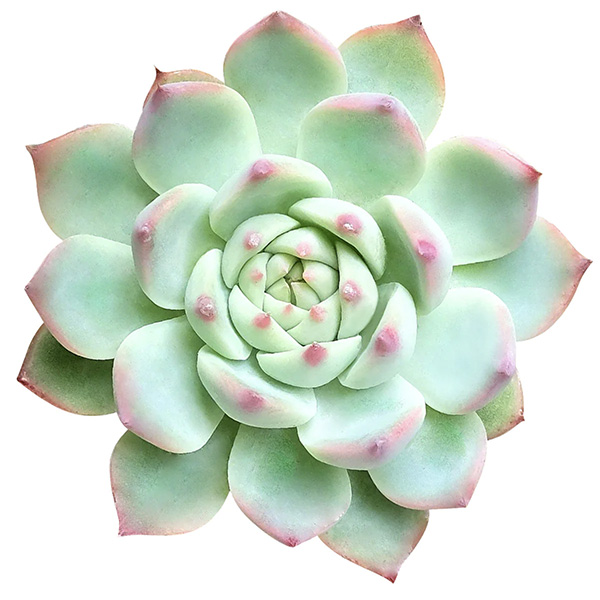Hello! I posted a few days ago on !houseplants@mander.xyz and one of the comments mentioned there was this succulent-specific community so I figured I would post here as well! So for a bit of background I have a black thumb, I’ve tried caring for plants in the past and they always seem to die on me. I’m trying to change this! I bought a handful of succulents and am trying to figure out how to keep them alive. Any advice is welcome!
The succulents: dwarf jade, panda plant, echeveria elegans, split rock, and there’s one more that I’m having trouble identifying so if anyone recognizes it please let me know! It’s the spiky one.
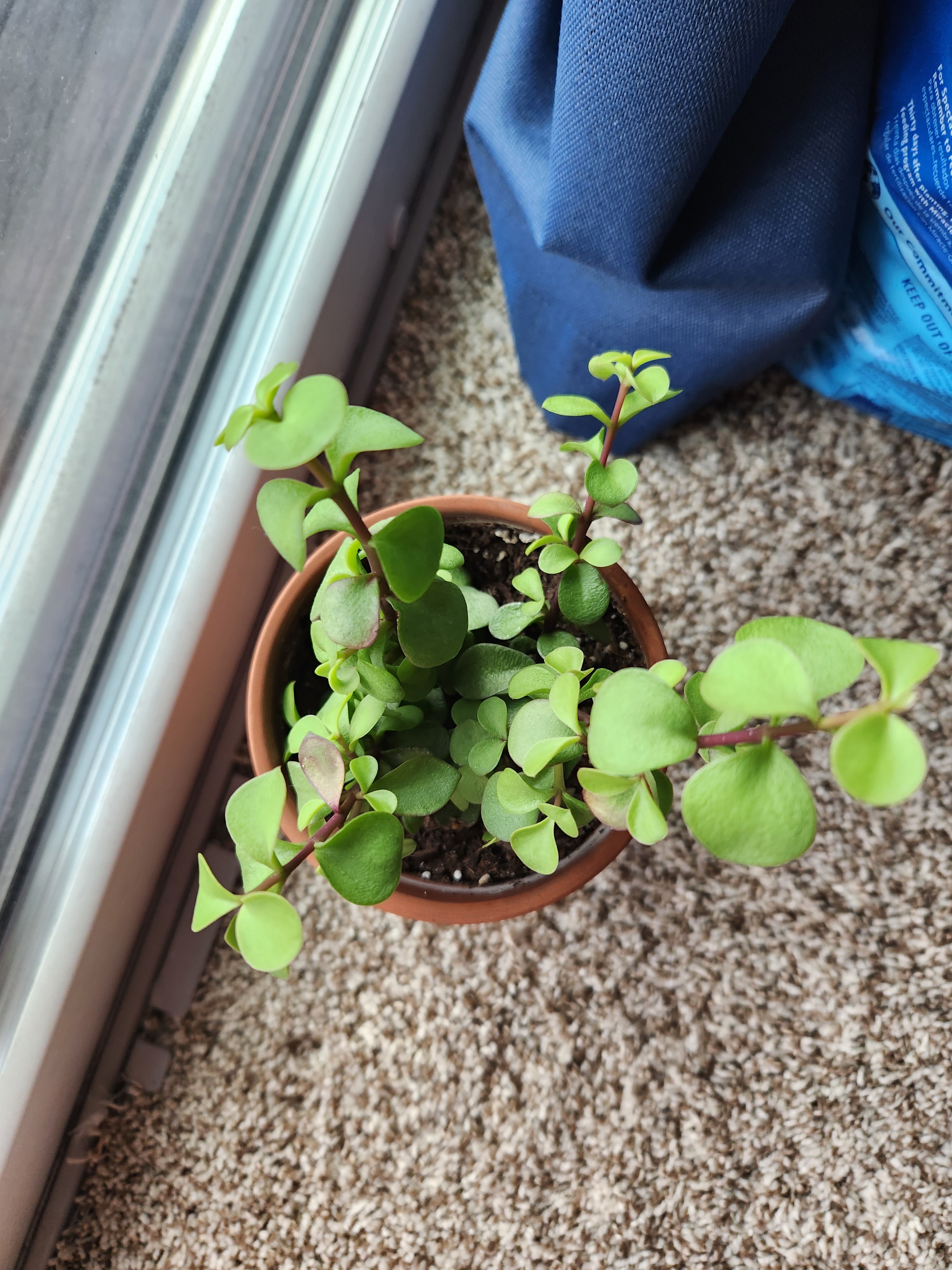
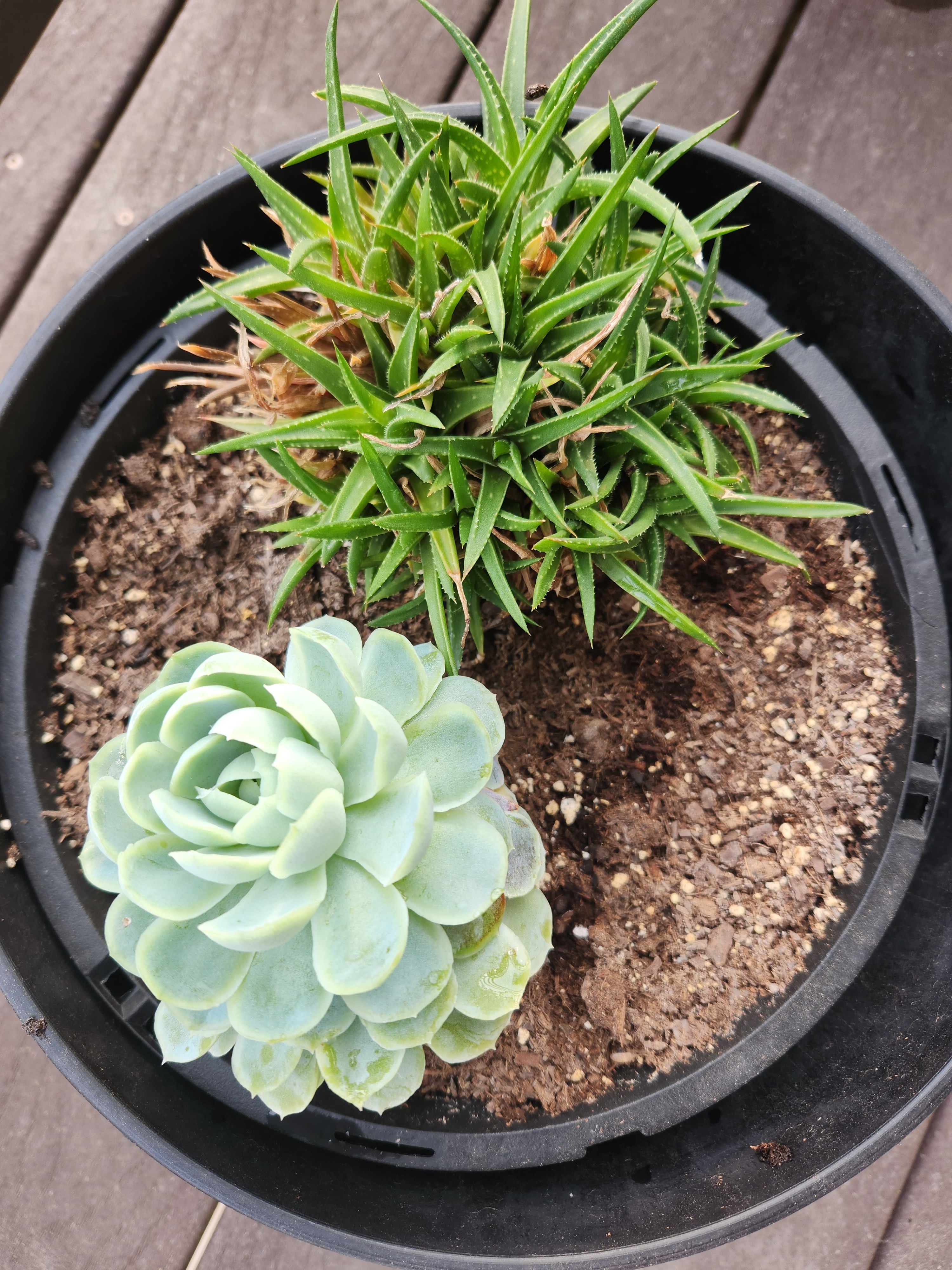
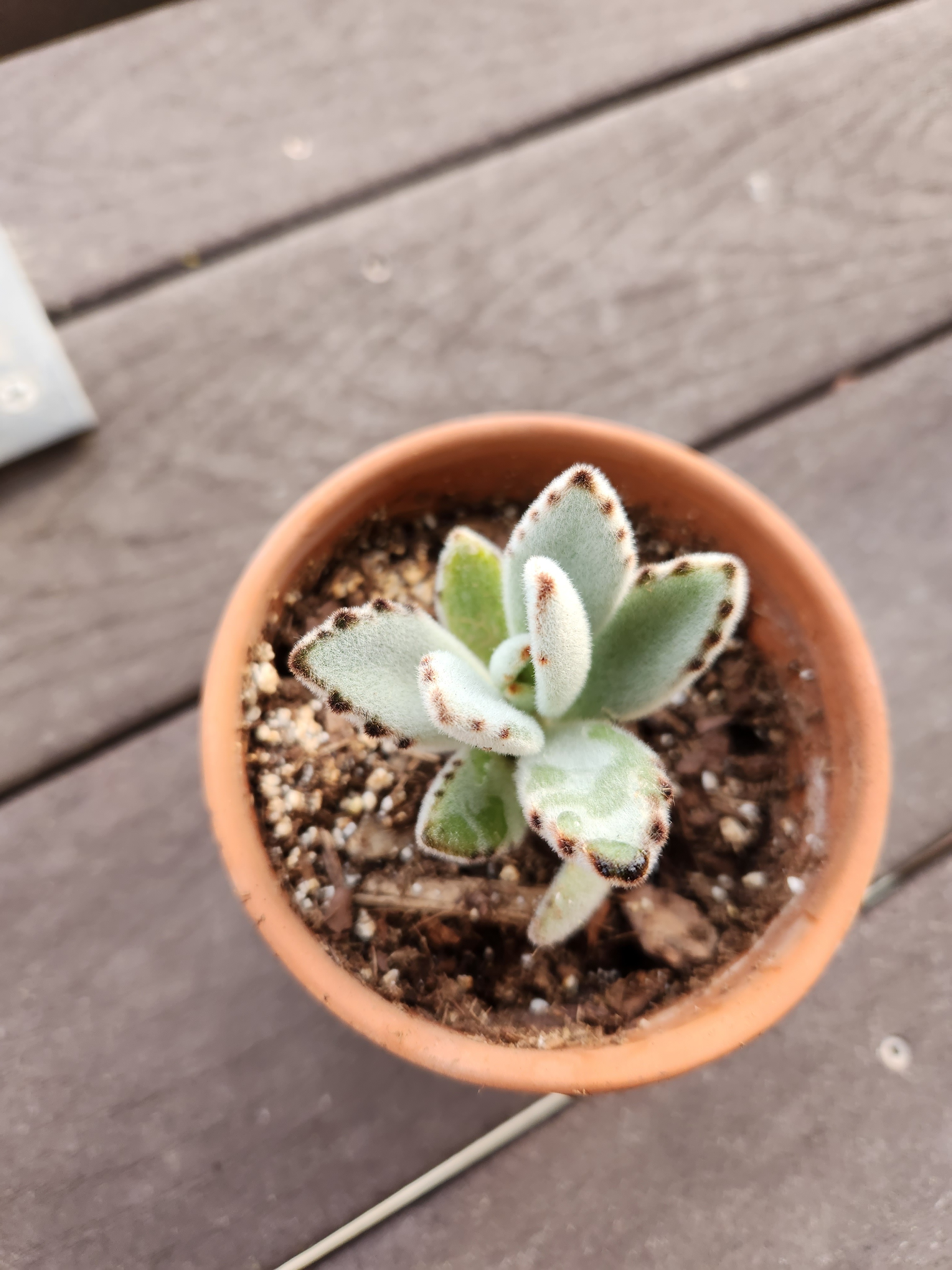
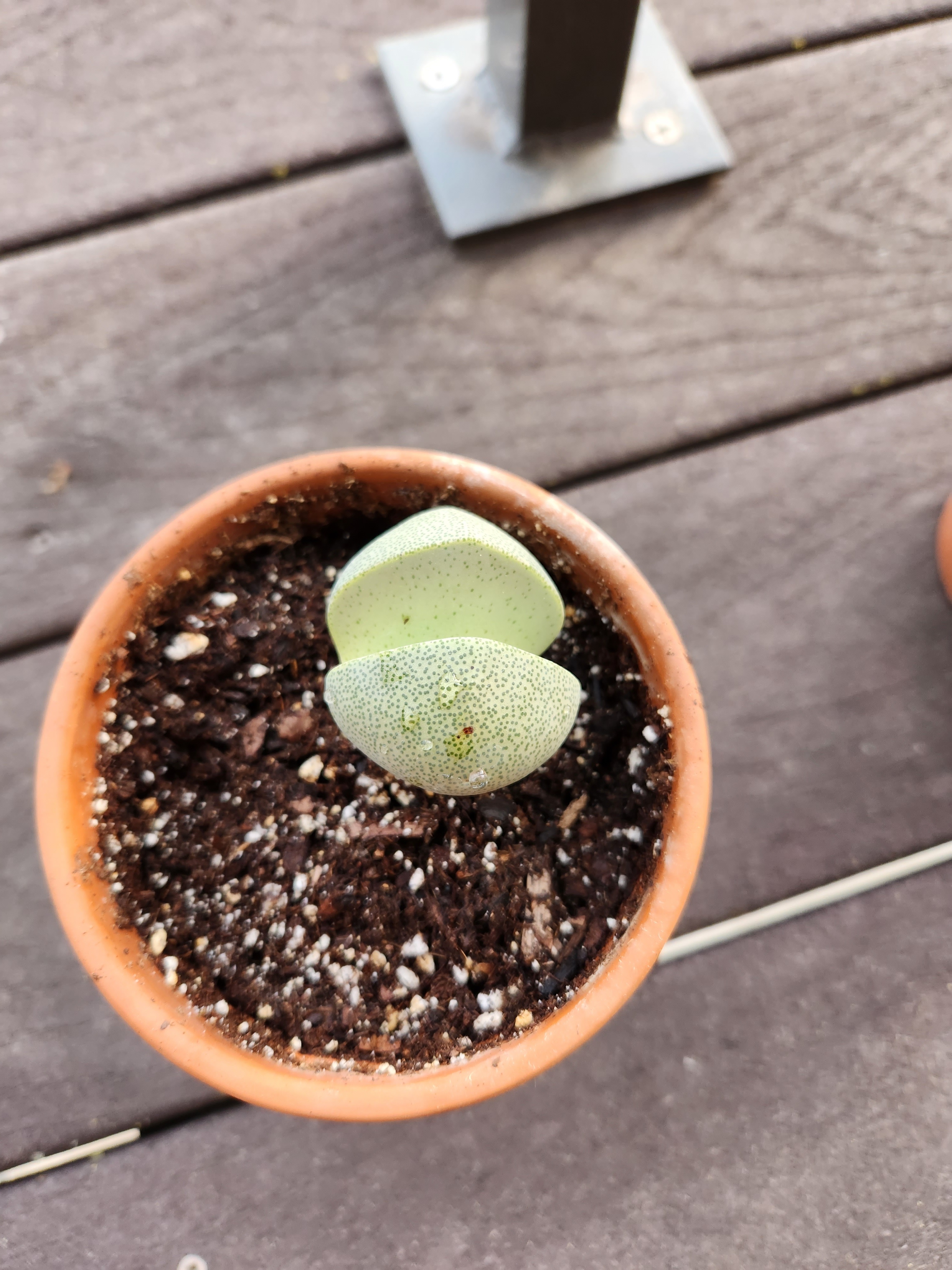
The dwarf jade or “portulacaria afra” you have tends to want to grow tall and has a very woody stem. This means you’ll need to trim it from time to time to keep it from getting too tall. Alternatively, of you’re into bonsai, it’s a really good plant to learn how to trim and train a bonsai plant since it’s very forgiving and grows relatively fast in comparison to non-succulent plants. Otherwise, you can trim it more like it’s a bush or even train the stems to hang over the side of the pot. Aside from that, it’s a pretty easy one to care for. I’ve accidentally left mine without water for months and found it with most of the leaves fallen off, but it always comes back to life!
deleted by creator
Usually neglect, and then when I realize (seeing wilting or things like that) an over-compensation of watering. Which is why I think succulents may be the better call because apparently they generally require less frequent watering
deleted by creator
I think I gave OP this advice on the original post, I love that someone else uses this method :)
I have three major beginner tips as a now 3 year succulent hobbyist:
-
Plenty of sun, outdoors if at all possible. Succulents are very hard to keep thriving indoors even if you happen to have a very sunny window with panels that don’t filter too much UV and infrared light. The grow light situation is also not easy to figure out or to rig up, and those little Amazon octopus-arm lights will definitely not cut it for healthy succulents. Move them into whatever your max sunlight situation is, but be sure to acclimate/harden off. This part is really annoying for the uninitiated, but you gotta do it or your previously-indoor succulents will burn up. Ask me how I know this 🥲 You will eventually get a feel for which plants are getting too much sunlight or too little sunlight. Too much, and you start to notice within each plant the difference between stress colors and starting to close up/disform to avoid anymore sun. Too little, and you start to see loss of vibrant color and stretching between leaves (etiolation). Personally I find if I can’t give a succulent enough light to grow in a compact form with some gentle-medium sun stress, they just don’t seem to thrive as well. And the only succulents I’ve ever successfully raised indoors took heaps of extremely bright grow lights.
-
Water only once the leaves in the middle-to-bottom (older) sections of the plant are no longer turgid. When the soil is wet, squeeze a few leaves at different growth sections of the plant over the course of a few days to learn what it feels like when it is jam packed with water - turgidity. When watering, water thoroughly. My plants are in very well draining soil (more on that in top 3) so I let my plants sit in a bowl of water for 30-60 minutes when it’s time to water, and sometimes hours unintentionally. As long as my substrate is extremely well draining, a nice soak only when the plant is getting quite thirsty works very well. One challenge you can run into when you learn to water based on signs of thirst is that you might miss signs of rot. It is important to stick your finger into the substrate (the plant shouldn’t be in too big of a pot for its size so do your best to check on the side, or stick a chopstick in!) and check for moisture retention. If it’s wet, don’t water, and if the plant is acting thirsty when there’s been water in the substrate for more than a day, you might be dealing with root rot and this might signal your soil is retaining water too long. Blending soil checks with watering based on signs of thirst is key.
2.5. This is a bonus watering item you honestly don’t have to do but I find makes a huge difference - fertilize! Since I bottom water my plants, I learn growing seasons for my succulents (IDing takes forever but super worth it) and fertilize during those, no fertilizer during dormant months. Imo, succulents go from looking awesome to spectacular when you get the fertilizer right along with everything else, especially the sun.
- Repot from packed nursery soil (or the stuff labeled “succulent soil”) into a 90+% gritty mix in a correctly-sized terracotta pot with a drainage hole. You can get fancy with this and I have seen others get great results, but personally I just use my own mix of perlite, bonsai jack or similar, and smaller-sized pumice + 10% succulent soil because I’m not made of money. Clean the roots of your succulents or simply “chop and prop,” and then plant into very well draining soil in terracotta. Start with 85-95% gritty mixes and you can work your way back down to something more retentive over time as your experience grows. Generally succulents hate sitting in waterlogged substrate for more than a day. The only tough side of this is very neglectful plant parents can eventually lose props to drying up, but I find this to be way harder to do than overwatering a plant in substrate that is too water retentive.
I think these tips really took succulent growing from a death spiral to a challenging but rewarding hobby haha.
-

